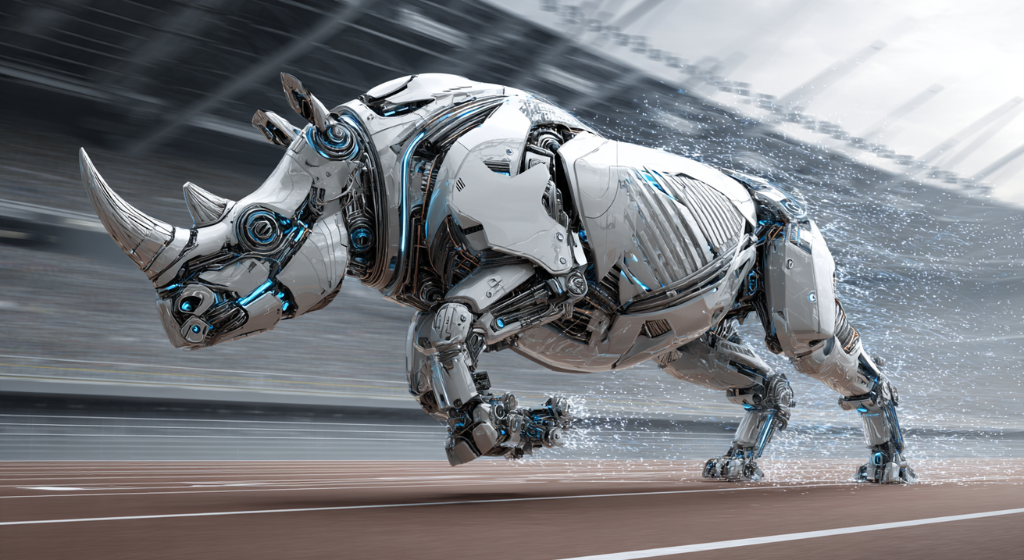
Zhejiang University’s quadruped robot White Rhino set a Guinness World Record with a 16.33-second 100-meter sprint, combining record-breaking speed with heavy load capacity in a breakthrough for robotics innovation. (Source: Image by RR)
Team Highlights Potential Roles in Search, Rescue and Supply Transport Missions
Zhejiang University has set a new milestone in robotics with its quadruped machine, White Rhino, completing a 100-meter sprint in just 16.33 seconds. The run, held at a test site in Hangzhou and validated by Guinness World Records, outpaced the previous record of 19.87 seconds held by South Korea’s Hound robot. While still far behind Usain Bolt’s human world record of 9.58 seconds, the achievement narrows the performance gap between robots and animal-like locomotion, underscoring the rapid progress of robotics research in China.
The White Rhino project, as noted in interestingengineering.com, united expertise from the university’s Center for X-Mechanics, the School of Aeronautics and Astronautics, and the Hangzhou Global Scientific and Technological Innovation Center. Researchers adopted what they call “robot forward design,” a strategy that builds every joint and actuator from comprehensive simulation rather than retrofitting existing frames. The result was a powerful hardware foundation with custom-built, high-density actuators delivering racing-grade torque and responsiveness. Paired with reinforcement learning-based control systems, the robot can execute explosive pushes, swift leg swings, and precise balance corrections.
White Rhino isn’t just about speed—it’s engineered for strength too. With a load capacity of 100 kilograms (220 pounds), the machine can carry heavy equipment across uneven terrain while maintaining stability. This unique combination of sprinting power and payload capability sets it apart from many other quadruped robots, which typically focus on agility alone. Developers suggest applications ranging from search-and-rescue operations in disaster zones to transporting supplies across rugged environments where wheeled vehicles fail.
The record-breaking run demonstrates how simulation-driven design, advanced actuators, and learning-based control strategies can redefine robotic potential. Looking ahead, the Zhejiang University team plans to focus on robustness, energy efficiency and autonomous navigation. Their ultimate aim is to evolve White Rhino from a record-breaking sprinter into a versatile tool capable of tackling real-world challenges—an ambition that could push legged robotics into new frontiers of utility and adaptability.
read more at interestingengineering.com







Leave A Comment